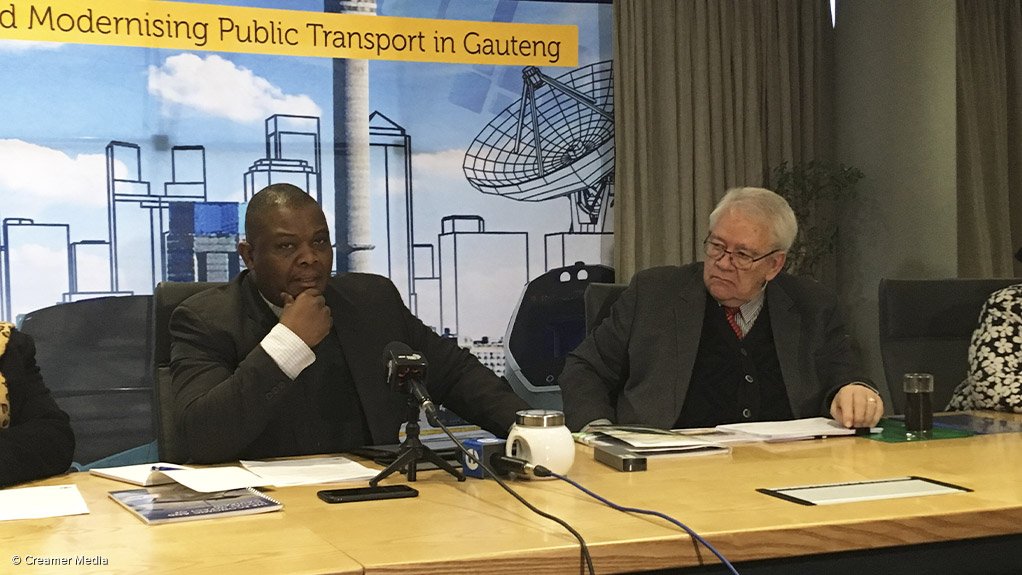A new study on the socioeconomic impact of the Gautrain indicates that the rapid-rail system adds R6.64-billion to the Gauteng economy’s gross domestic product (GDP) – or 0.56% – during a typical year of operation.
The newest study – the second – was conducted by consulting engineering firm Hatch.
The study, released on Monday, also shows that for every rand spent on Gautrain’s original construction, around R2.60 of economic benefit has been delivered to Gauteng over a ten-year period.
The Hatch study also highlights the fact that more than 98-million trips have been made on the Gautrain since 2010, with more than 10 900 direct operational jobs created.
Around 70% of the trips on the Gautrain cross a city boundary.
Shifting from using a car to the Gautrain saves a significant amount of time travelling between cities, such as an average of 43 minutes between Pretoria and Sandton at the peak hour of seven in the morning.
The study also shows that commercial floor space has increased by more than 1.6-million square metres around the ten Gautrain stations since 2010.
Median sales values per square metre for office space have increased by 45% around stations since 2010, higher than the change across Gauteng, which was 22%.
Median sales values per square metre for retail space have increased by 32% around stations since 2010, higher than the change across Gauteng, which was minus 10%.
Median sales values per square metre for residential space have increased by 52% around stations since 2010, higher than the 34% growth achieved across Gauteng over the same period.
Looking ahead, a capital expenditure wishlist to the value of R24.4-billion on the current 80 km system, as well as a proposed expansion project of the Gautrain by 149 km with 19 new stations (which Hatch values at around R110-billion at current prices), should expand the socioeconomic impact of the system ever further.
The R24.4-billion list – with funding not yet secured for all the projects – aims to improve the efficiency of the current system. It hopes to add new stations at Waterfall, Samrand and Modderfontein; to increasingly commercialise the Centurion and Marlboro stations; to add new rolling stock, as well as a new depot to the system to alleviate congestion; to add buses to the system; to create a Y-link to connect the northern part of the system directly to the OR Tambo International Airport, and to enhance parking at the Rosebank, Pretoria and Hatfield stations.
Acquiring new, additional rolling stock would be the most important and immediate of these interventions, said the Gautrain Management Agency (GMA) on Monday.
An expanded Gautrain system should add R5-billion to Gauteng’s GDP during a typical year of construction, and R12.44-billion to GDP during a typical year of operations.
The Hatch study shows that 175 000 new direct construction jobs will be created through the expansion of the Gautrain, as well as 68 000 new direct operational jobs over twenty years.
Speaking at the Hatch report launch in Midrand, Gauteng Roads and Transport MEC Jacob Mamabolo said his number one priority was to have a balanced transport system in Gauteng, based on the migration from road to rail.
“I’ll be saying to the provincial and national government to invest in the Gautrain, to expand the network. I’ll be championing the investment in Gautrain, in order to relieve the road network from as many people as possible.”
He said the Gautrain was not only a mode of a transport, but a means to transform Gauteng’s socioeconomic environment.
GMA CEO Jack van der Merwe noted that the proposed 149 km expansion of the Gautrain had been registered with government as a public-private partnership, and that it was currently awaiting the funding go-ahead from National Treasury.
EMAIL THIS ARTICLE SAVE THIS ARTICLE ARTICLE ENQUIRY
To subscribe email subscriptions@creamermedia.co.za or click here
To advertise email advertising@creamermedia.co.za or click here











